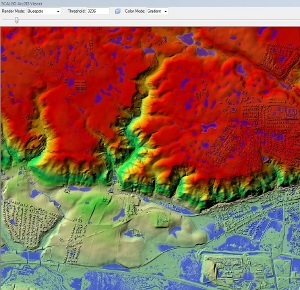Submission for papers in the Academic Track of FOSS4G is now open
The FOSS4G Academic Track is bringing together researchers, developers, users and practitioners carrying out research and development in the geospatial and the free and open source fields.
With the Academic Track motto “Science for Open Source, Open Source for Science”, we aim to attract academic papers describing:
- The use of open source geospatial software and data, in and for scientific research
- Academic endeavours to conceptualize, create, assess, and teach open source geospatial software and data.
Based on these categories, to promote a strong connection between the Academic Track and the other elements of FOSS4G, we hope for contributions within the following themes:
- Data Quality, Software Quality and Service Quality
- Community Building
- Doing more for less: Assessment of costs and benefits of open source applications and open source business models
- Use of Open Data to inform public services
- FOSS and FOSS4g: Is spatial special?
- Architectures and frameworks for open source software and data
- Teaching Geospatial Sciences with open source solutions
- Open Source GIS application use cases: Government, Participatory GIS, Location based services, Health, Energy, Water, Climate change, etc.
- Human Computer Interfaces and Usability in and around Open GI systems
We invite academics and researchers to submit full papers in English, of maximum 6,000 words, before the deadline of 1 February. Templates for submissions in a variety of formats can be found here, and detailed requirements, regarding layout, formatting and the submission process, can be found on the FOSS4G 2103 Academic Track submission pages
Your contributions will be reviewed (double-blind) by a diverse reviewing committee of experts in the field, who will be asked to assess the papers on originality and academic rigour, as well as interest for the wider FOSS4G community. We expect to select 20-25 papers for presentation and publication. From this selection, a maximum of 8-10 papers will be given the opportunity for inclusion in a special issue of the renowned international journal Transactions in GIS [1]. The remaining papers will be published in the online OSGEO Journal [2].
We would like to specifically invite “early stage researchers” (PhD students, PostDocs) to use this opportunity to aim for a high-ranking publication.
Authors of all selected papers will be expected to present their work in detail in a separate Academic Track (with 20-30 minute slots), and will also be given the opportunity to pitch the central theme of their paper in short ‘lightning’ talks to the larger community, to generate attention and cross-pollenate with industry, developers and users.
Important Dates:
NOW: Submission open
1 February: Deadline for submission of full papers
1 April: Reviewing decisions
1 May: Paper revision deadline
15 September: publication of selected papers
8-10 papers in Early View (on-line) Transactions in GIS
others in on-line OSGEO Journal
17-21 September: FOSS4G Conference
early: printed issue Transactions in GIS
For questions, comments and remarks, do not hesitate to contact the Academic Track co-chairs:
Franz-Josef Behr (Stuttgart University of Applied Sciences):
Barend Köbben (ITC-University of Twente):
[1]: Transactions in GIS. Published by Wiley; included in ISI, with an impact factor of 0.54; edited by John P. Wilson, David O’Sullivan and Alexander Zipf. Print ISSN: 1361-1682 Online ISSN: 1467-9671.
[2]: OSGEO Journal, the official Journal of the Open Source Geospatial Foundation;
Read More »